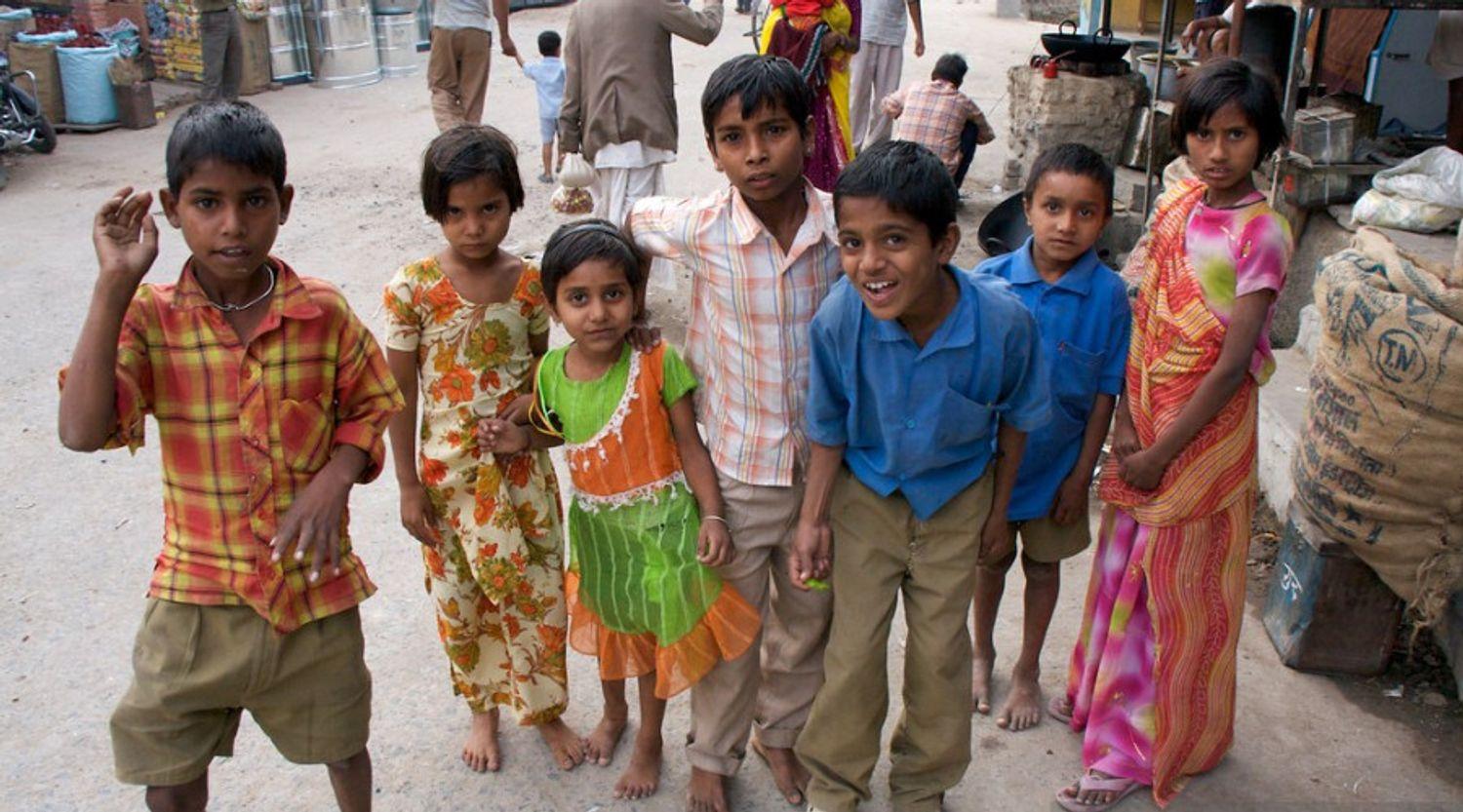Famously known as The City of Palaces, it wouldn’t be wrong to say that Mysore, currently Mysuru, is one of the most important places in the country regarding ancient reigns. It is replete with the history of its dazzling royal heritage, intricate architecture, its famed silk sarees, yoga, and sandalwood, to name just a few.
Located in the foothills of the Chamundi Hills, Mysore is the third most populated city in Karnataka, and its rich heritage draws millions of tourists all year round. The highlight is the majestic Mysore Palace, a UNESCO World Heritage Site, which is a must-visit.
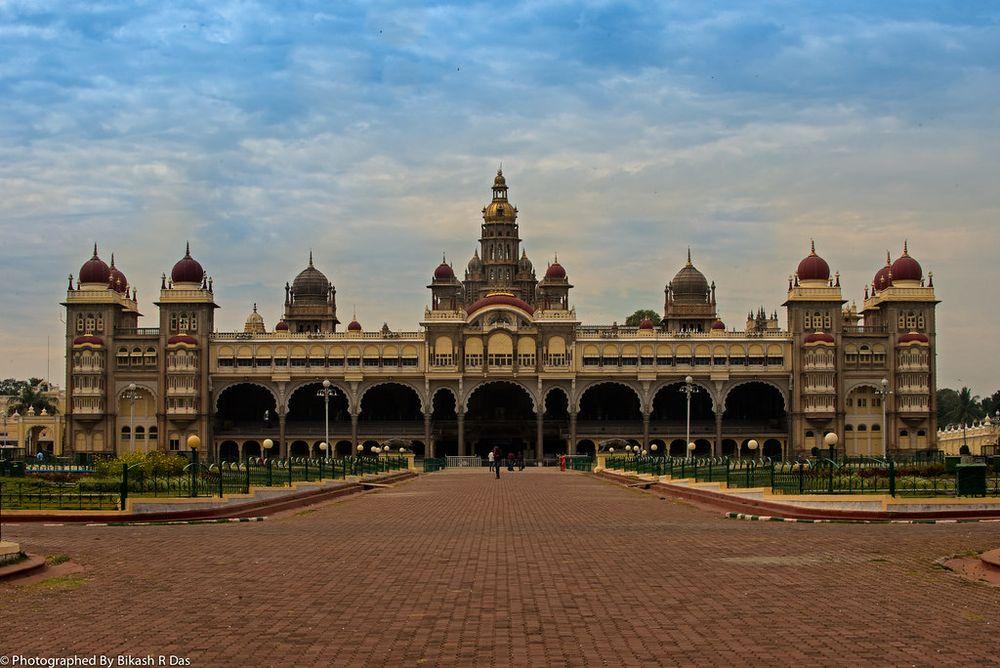
Mysore was one of the three largest Princely States in the erstwhile British Empire of India. To this day, the Mysore Palace stands tall as one of the most spectacular palaces in India.
A very famous tourist spot that sees thousands of visitors milling in and around it every day, the Mysore Palace is a mesmerizing example of Indo-Saracenic architecture, every inch of the palace drips with opulence and intricate details, and every room that you visit stands out in terms of its elaborate architecture, beautiful paintings, rich colours and stained-glass windows.
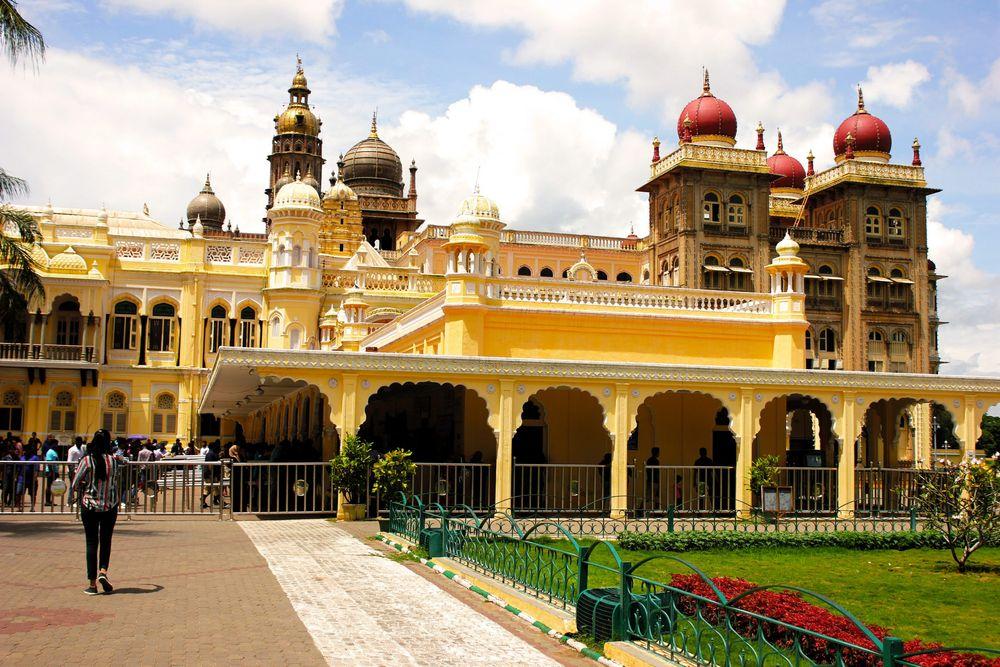
On every Sunday, and during the Dussehra celebrations, the palace is spectacularly lit up once dusk falls. Another popular element in Mysore is the Ashtanga School of Yoga. This draws visitors and practitioners from around the world to participate in this style of yoga that originated in Mysore.
Highlights
Architecture of Mysore
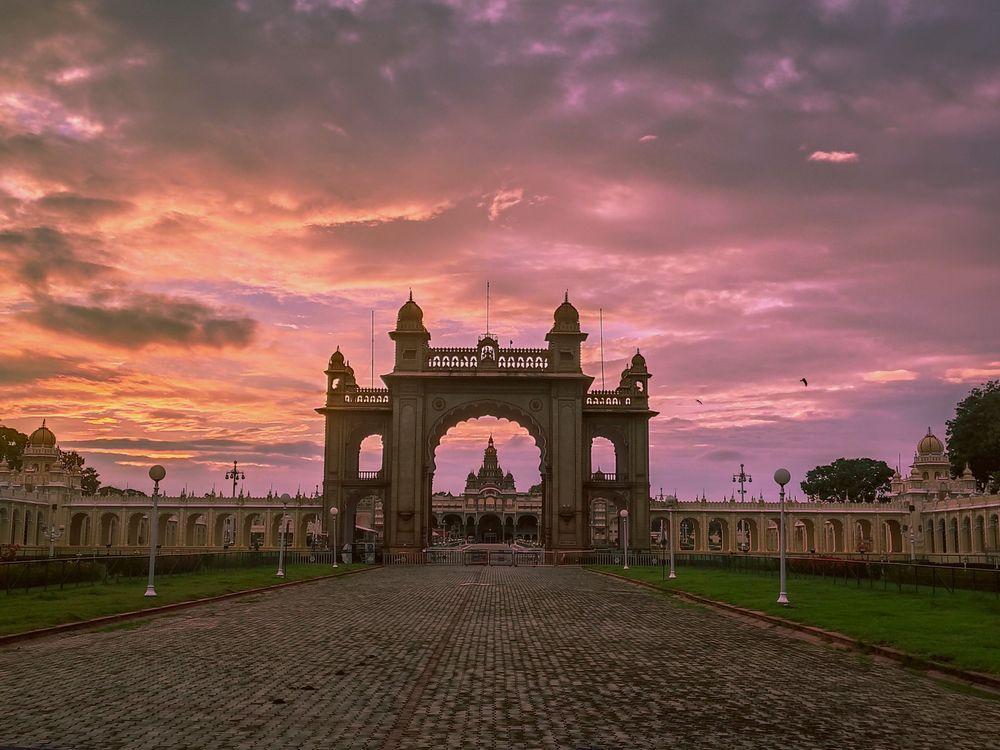
The architectural style of structures in the Mysore kingdom experienced significant changes during British rule – a blending of European conventions with local components. The Hindu temples in the kingdom were constructed in typical South Indian Dravidian style. The city’s main place, the Mysore Palace, was designed by the English architect Henry Irwin in 1897.
Corridors in Mysore Palace
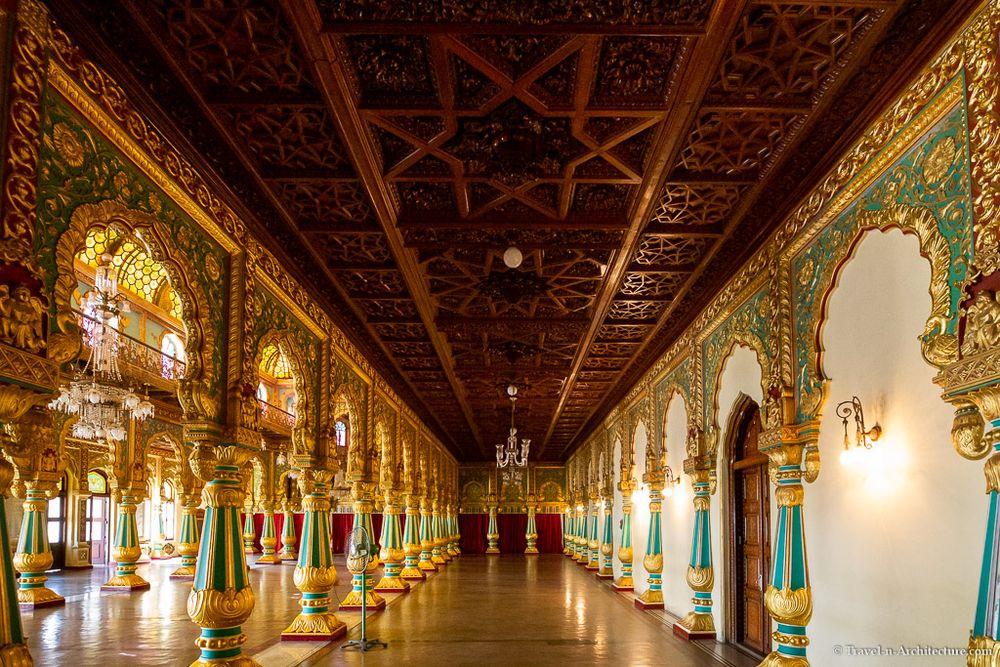
The design is a combination of Hindu, Islamic, Indo-Saracenic and Moorish styles, which for the first time in India, used cast-iron columns and roof frames. One can also find architectural designs from the Renaissance period and exhibits concepts in English manor houses and Italian palazzos.
These styles can be found in the architecture of the Lalitha Mahal Palace that was built in 1921 by E.W. Fritchley under the commission of Maharaja Krishnaraja IV. One can also find buildings constructed in the Greco – Roman style in the Chaluvamba Mansion and the
Mysore Pak
Mysore Pak is a delicious sweet dish that is made of roasted gram flour and butter. It is a traditional South Indian sweet dish. History states that this mouth-watering dish was first made in the kitchens of the Mysore Palace which was then ruled by Mummadi Krishnaraja Wodeyar. The sweet delighted the royalties so much that it was declared as the ‘Royal Sweet.' However, at that time it did not have a name, so it was named as “Mysore Pak’.
The Reign Of Tipu Sultan
Tipu Sultan was the eldest of Hyder Ali, who was the Muslim ruler of Mysore. He fought the second Mysore war in February 1728 where he defeated Col. John Brathwaite. Tipu Sultan succeeded his father in December the same year.
He continued his aggression against the British by recapturing Baidanur and Mangalore. In 1784, he settled peace with the British and assumed the title of Sultan of Mysore.
Tipu Sultan
Tipu introduced some administrative revolutions during his rule, including his currency, a new Mauludi lunisolar calendar and a new revenue system of land which instigated the development of the Mysore silk industry.
Tipu Sultan was a capable general and administrator, and, though a Muslim, he reserved the faithfulness of his Hindu subjects. Tipu Sultan was commonly known as the Tiger of Mysore and adopted this animal as the symbol of his reign. It is said that while he was hunting in the woods with a French companion, he encountered a tiger.
His weapon did not work, and his knife fell on the ground as the tiger hopped on him. He went after the blade, lifted it up, and killed the tiger with it. That earned him the name "the Tiger of Mysore."
Mysore Dasara
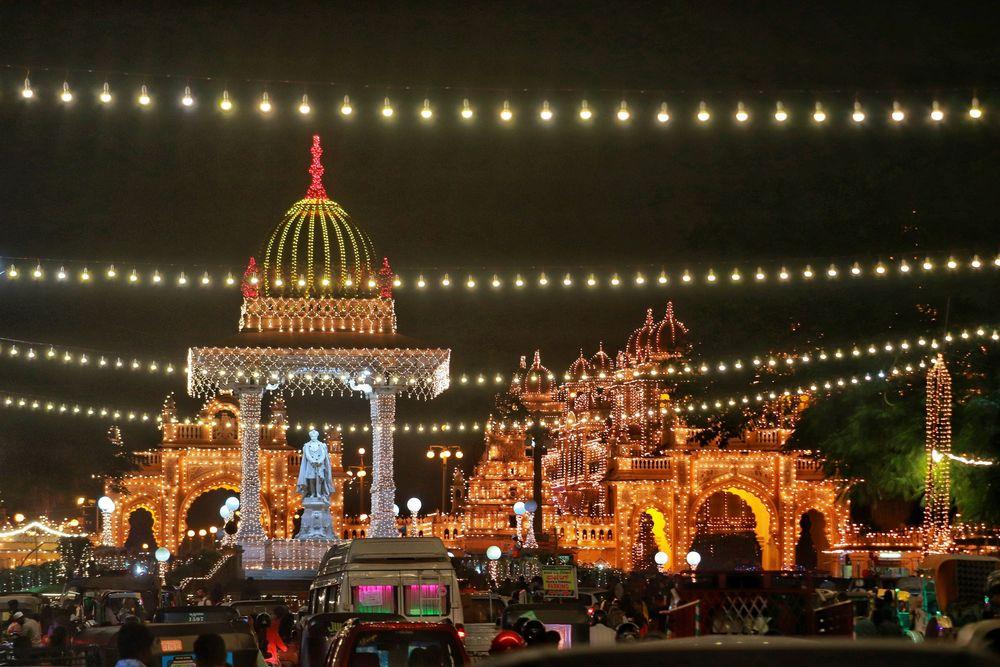
Dussehra or Dasara as it is known as in the southern part of India is synonymous with Mysore. It is the most extravagant festival which sees the entire city lighting up and coming alive. Also called Navaratri, this is a 10-day festival that ends with the celebration of Vijayadashami.
Restaurants and Local Food in Mysore
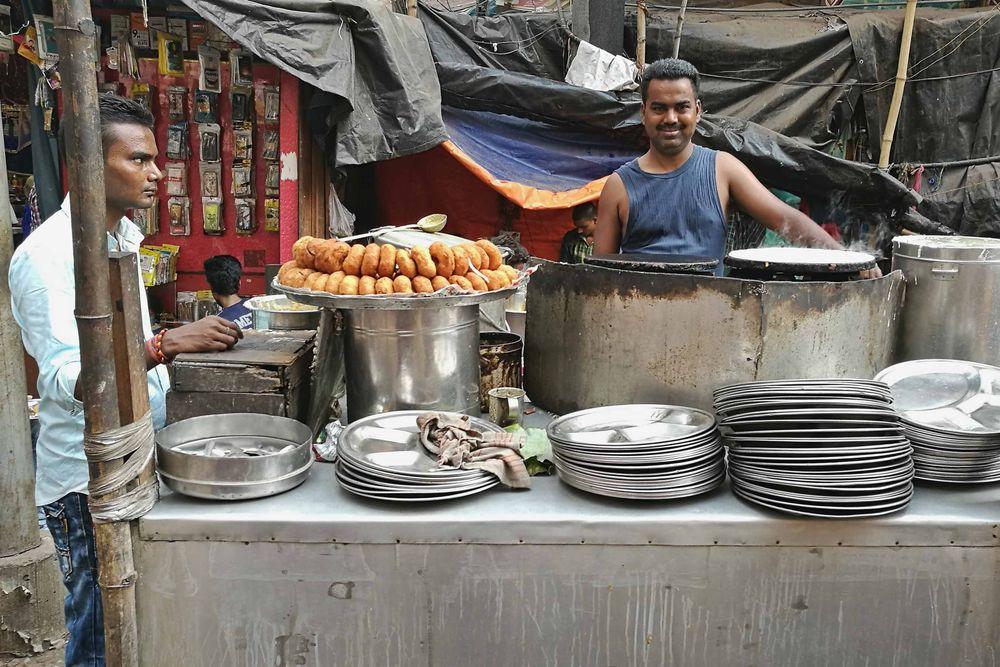
The cuisine of Mysore has a distinct influence of Udipi cuisine on its dishes. One of the most famous items here is the traditional sweet, Mysore Pak. Other than this, Mysore's platter is brimming with authentic, traditional and local cuisines.
These include Idli, Dosa, Shavige Bath, Pongal, Chutneys and Pickles, Vangi Baath (rice with Brinjal curry), Bisi bele bath (a spicy preparation of rice) as well as a number of sweets such as Payasam, Jalebi, Rave Unde, Ladoo and more. Indian filter coffee and Adike (Areca nut) with Betel leaf are also popular items.
Shopping
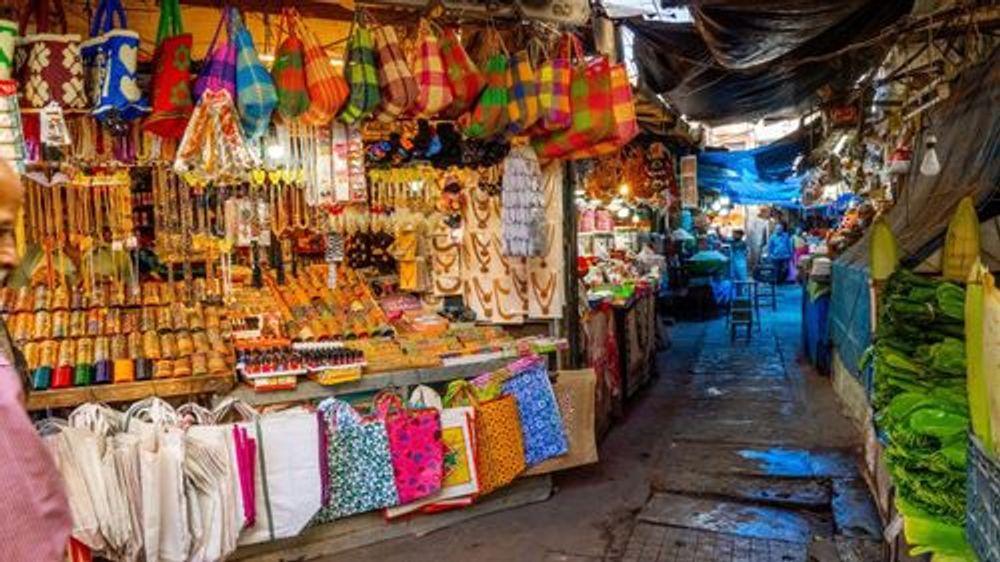
Shopping in Mysuru Renowned for its exquisite artifacts and finest silk, Mysuru is the shopping Mecca of South India. Mysuru silk is undoubtedly the crown jewel, known all over the world for its super fine fabric and a soft texture.
The amazing flavour and astonishing fragrance of Mysuru Pak is a sure delight to the taste buds. Mysuru handicrafts range from sandalwood and rosewood art pieces like wall hangings, corner tables and other furniture, to stone sculptures, paintings and incense sticks.
The best shopping destinations in Mysuru are Sayyaji Road, Dhanvanthri Road and Ashoka Road. For fine silk sarees, visit the Government Silk Factory on Jhansi Lakshmi Bai Road.
The Devraj Urs market is also worth exploring for a variety of fruits, vegetables, spices, perfumes, kumkum powder, flowers, etc.
Experience the real Mysuru (Mysore). Let us handle the planning for you:
Historic Sites
Mysuru Palace
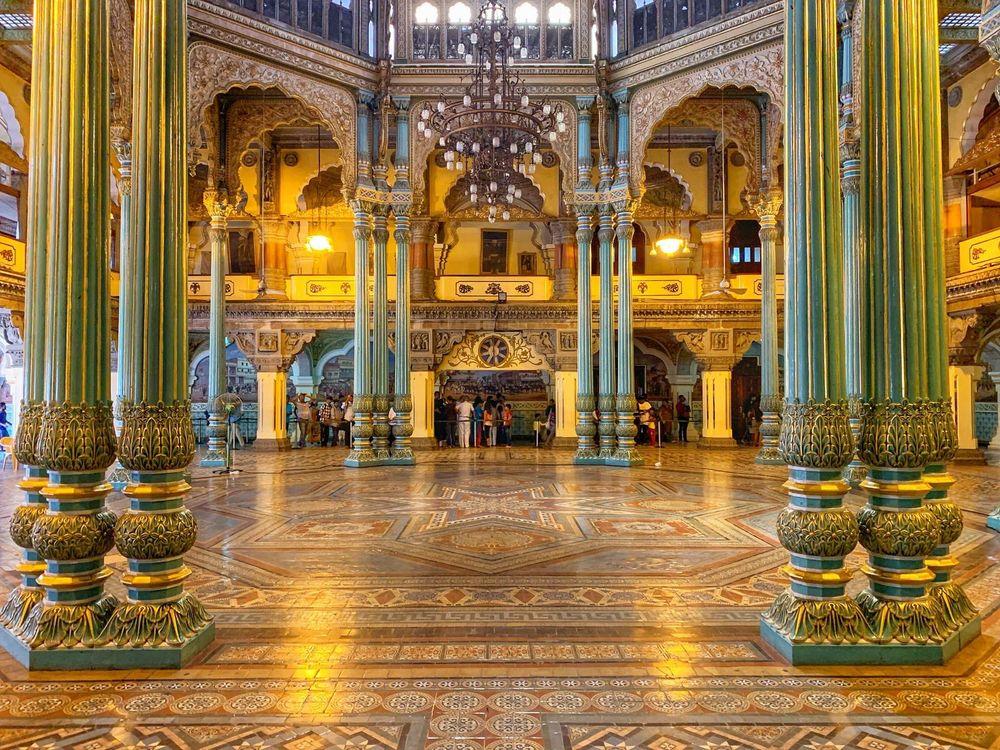
Constructed in Indo-Saracenic style, the magnificent Mysuru Palace also known as Amba Vilas is the official residence of the Wadiyar dynasty and the seat of the Kingdom of Mysuru.
Its exquisite interiors – replete with carved mahogany ceilings, stained glass, gilded pillars and glazed tiles – epitomizes royalty and grandeur.
The palace, illuminated with 97,000 lights, turns into a glorious spectacle at dusk on Sundays and public holidays. It is arguably the most visited palace in India.
Lalit Mahal Palace
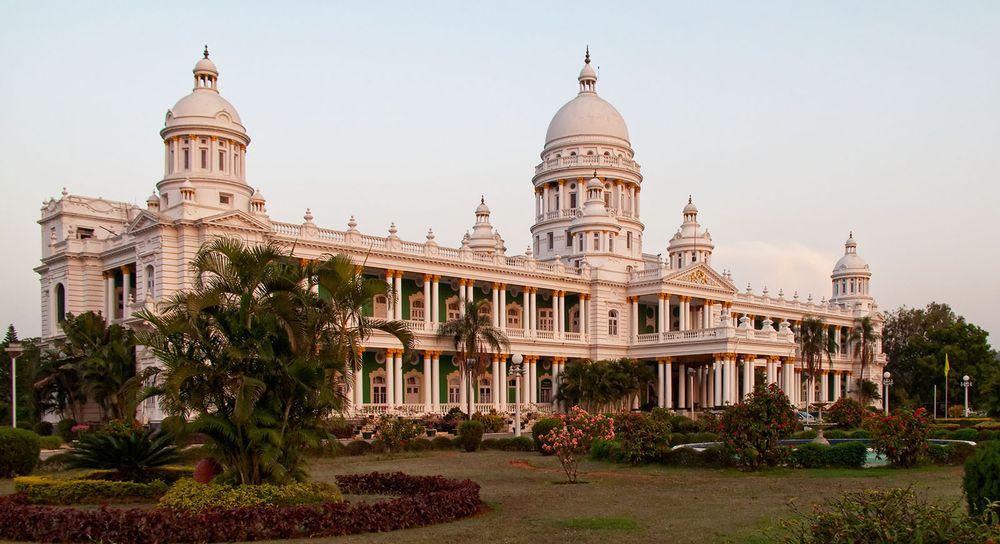
The second largest palace in Mysuru, located near the Chamundi Hills. Built in 1921, Lalit Mahal Palace is now a heritage hotel.
Talakadu
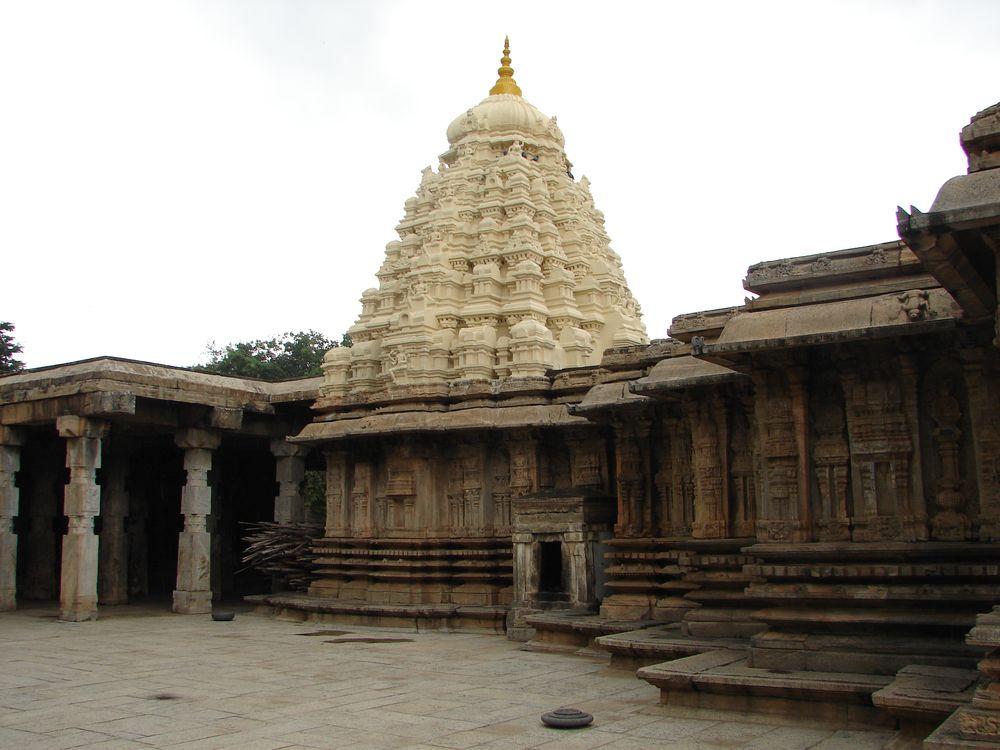
A place of tremendous archaeological significance, Talakad is known for the 30 temples buried under the sands. Legend says that the temples of Talakad buried under the sands due to a curse.
Excavations led to the discovery of several temples - mostly dedicated to Lord Shiva - belonging to the Hoysala, Ganga and Chola dynasties. Devotees throng this temple town during the Panchalinga Darshan held once in 12 years.
Chittaranjan Palace
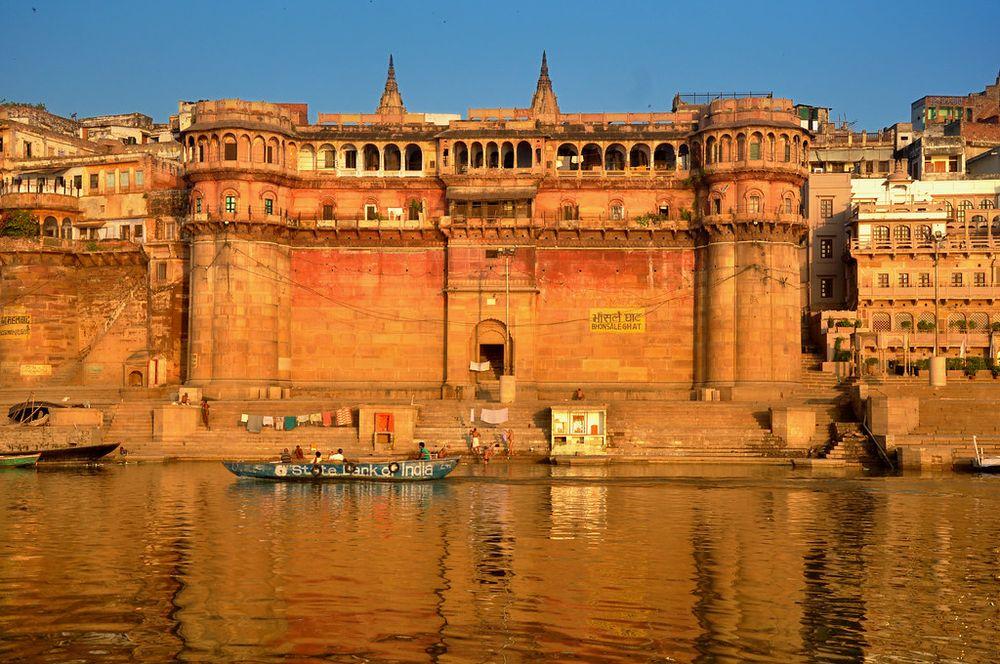
Chittaranjan Palace was built by the Maharaja of Mysuru for his sister in 1916. Chittaranjan palace is located on the Hunasur road.
Wildlife
Mysuru Zoo
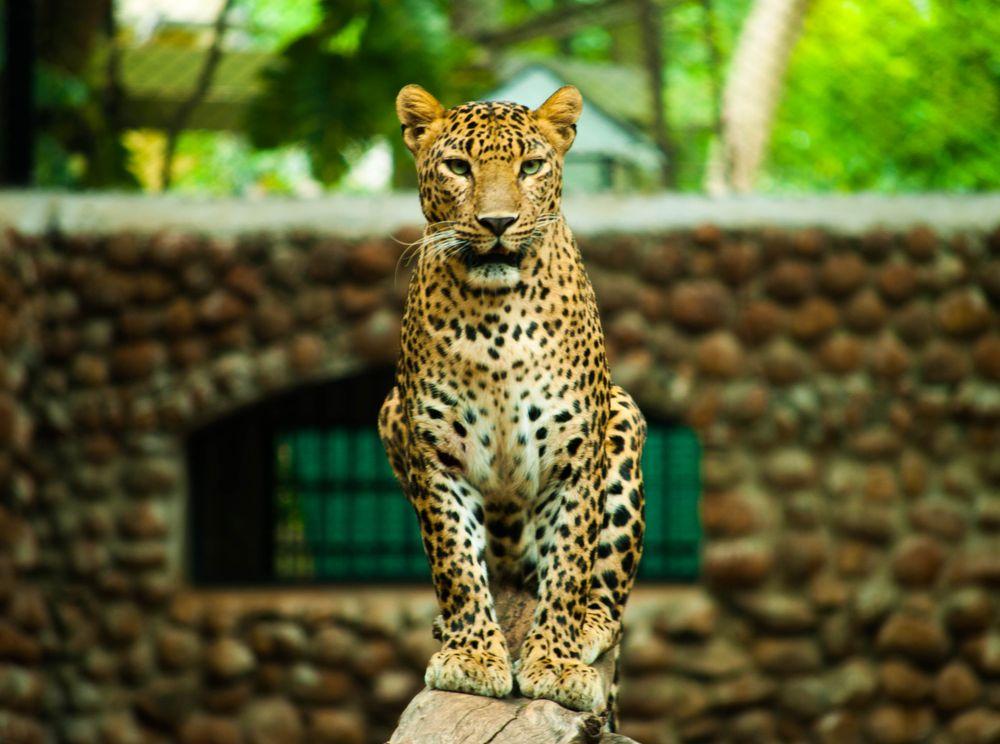
The Mysuru Zoo or the Sri Chamarajendra Zoological Gardens is the most popular zoo in Karnataka and is one of the oldest zoos in the country, established in 1892.
The zoo is home to abundant flora and fauna and is known for 1,450 species of animals and 168 species of birds belonging to more than 25 countries. Mysuru Zoo is a must visit when in Mysuru, particularly for animal lovers and families with kids.
Most popular animals in Mysuru Zoo are Tigers (including white tiger), Lions, Jaguars, Giraffe, Zebra, Leopards, Rhinos, Birds, Elephants and Hippopotamus
Nagarahole National Park

Situated between the Mysuru plateau in Karnataka and the Nilgiri Mountains of Tamil Nadu, Nagarahole is a 640 sq. km. sanctuary that is home to an abundant variety of wildlife.
Rajiv Gandhi National Park is an important Tiger Reserve in Karnataka and is a major hub of conservation under Project Tiger and Project Elephant, the sanctuary is host to the largest herd of Asiatic elephants in the world and innumerable species of birds, flora and fauna including large predators, reptiles, gaurs, deer, bears and smaller animals.
Nagarahole is a must visit national park for wildlife enthusiasts and photographers as the forest safari offers a very high probability of being able to spot Bengal tigers and Asiatic elephants in their natural habitat.
Nagarahole national park is also home to a large number of wild dogs, leopards and bears. Commonly spotted herbivores animals are wild gaurs, wild boar, sambar deer, Antelope, spotted deers as well as several species of birds.
Religious Places
Chamundeshwari Temple

Located 12 km from Mysuru, the Chamundi Hills is home to the Goddess Chamundeshwari, the patron deity of the Mysuru Royal Family. Built in the Dravidian style architecture, the 17th-century Chamundeshwari temple with a richly-attired image of the deity also has a huge statue of Mahishasura near the entrance.
An older Ganga-era Mahabaleshwara Temple is also located on the hilltop. According to the legends, the Goddess defeated the demon king Mahishasura, on this hill. Halfway up the hill, you can also see the monolithic Nandi, believed to be one among the largest in the country.
Said to have been 1000+ years old, Chamundeshwari temple featuring Goddess Durga received patronage from all rulers such as Hoysalas, Vijayanagara Empire and Mysuru Wodeyars. The temple tower (Raja Gopura) was added by Krishna Raja Wodeyar III in 1830.
Somanathapura
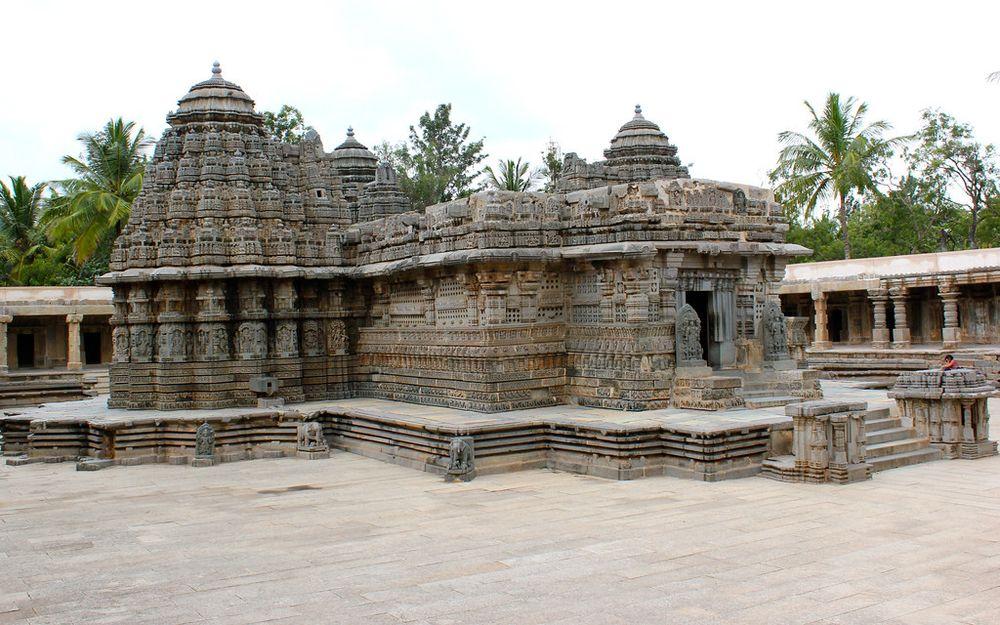
Displaying every bit of the artistry that its sculptures were famed for, the Keshava Temple at Somnathpur is one of the best preserved example of Hoysala architecture. Completed in 1268, the temple exhibits ornate carvings on literally every inch.
Though the image in the central sanctum is missing, the other two contain an image of Krishna playing the flute and of Janardhana, respectively. A unique feature of the temple is that sculptors were allowed to sign their work here.
Gomatagiri
Though not as tall as the one at Shravanabelagola, the statue of Gomateshwara at Gomatagiri is still an imposing figure, at 10 m tall. Shrines with the footprints of the 24 Jain Thirthankaras are scattered around the hillock.
From the top, one can view the Krishna Raja Sagara Dam and the Brindavan Gardens, at a distance. Gommatagiri comes alive during the head-anointing ceremony of Lord Bahubali every September.
St. Philomena’s Cathedral
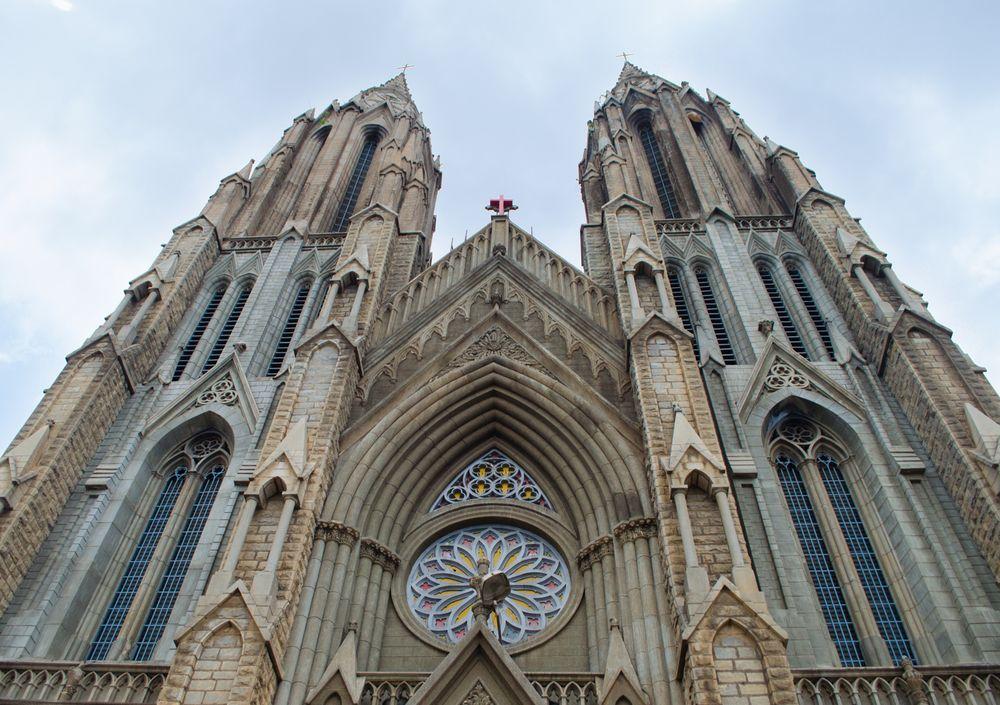
One of the largest cathedrals in India, St. Philomena’s Cathedral in Mysuru is a remarkable example of Gothic architecture.
The majestic church, built to honour the memory of Saint Philomena, a Latin Catholic Saint of the Roman Catholic Church, draws inspiration from the beautiful Cologne Cathedral of Germany.
Remains of St Philomena are preserved at the cathedral. St. Philomena’s Cathedral is one of the tallest churches in Asia.
Nanjangud
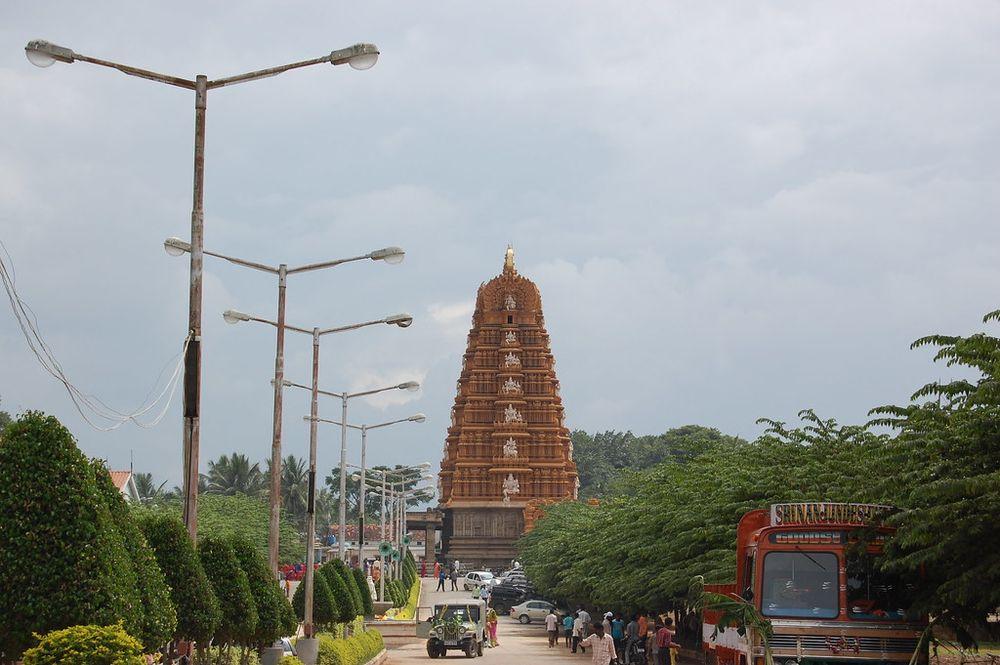
Nanjangud owes its name to the ancient temple of Nanjundeshwara situated on the banks of the River Kapila. An architectural marvel, the temple stands out for its remarkable tiered gopura, stucco work and ornately sculpted mythological scenes.
The temple, with Lord Srikantheshwara as the main deity, has an impressive gallery of 122 metallic figures on Shaivite themes and a stone Nandi facing the sanctum sanctorum.
Nanjangud is also famous for the exotic Nanjangud rasabale – a unique banana variety grown in and around here, which was given a Geographical Indication (GI) tag.
Datta Peetham
Sri Ganapati Sachchidananda Avadhoota Datta Peetham is an ashram in Mysuru with beautiful gardens with bonsai among other plants.
Golden Temple
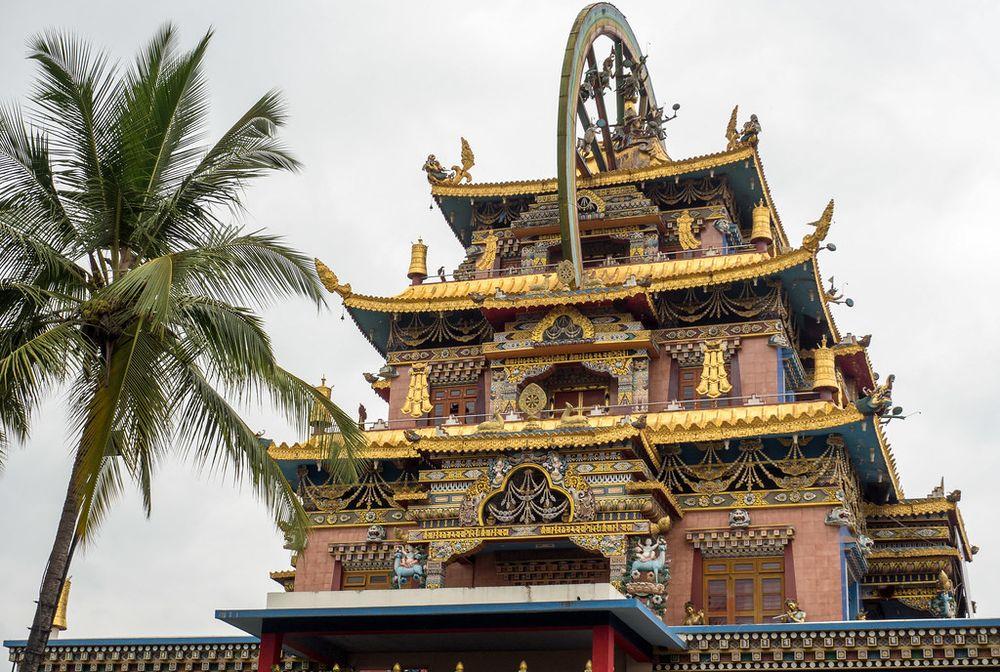
The Namdroling Monastery, popularly referred to as ‘The Golden Temple’ is one of the largest Tibetan settlements in India. Located in Bylakuppe, about 5 kms from Kushalanagara, the golden temple complex is home to about 16000 refugees and 600 monks.
Suttur
A prominent Veerashaiva centre, agrahara and home to Sutturamma temple of Ganga times. Other prominent temples near Suttur are Hoysala style Narayanaswamy temple, and Mahadeshwara temple.
Maszid-e-Nawab Saheb
Oldest mosque in Mysuru from Tipu Sultan’s times. Halain Moimen mosque is the other notable mosque in Mysuru.
Tourist Attractions
Brindavan Gardens
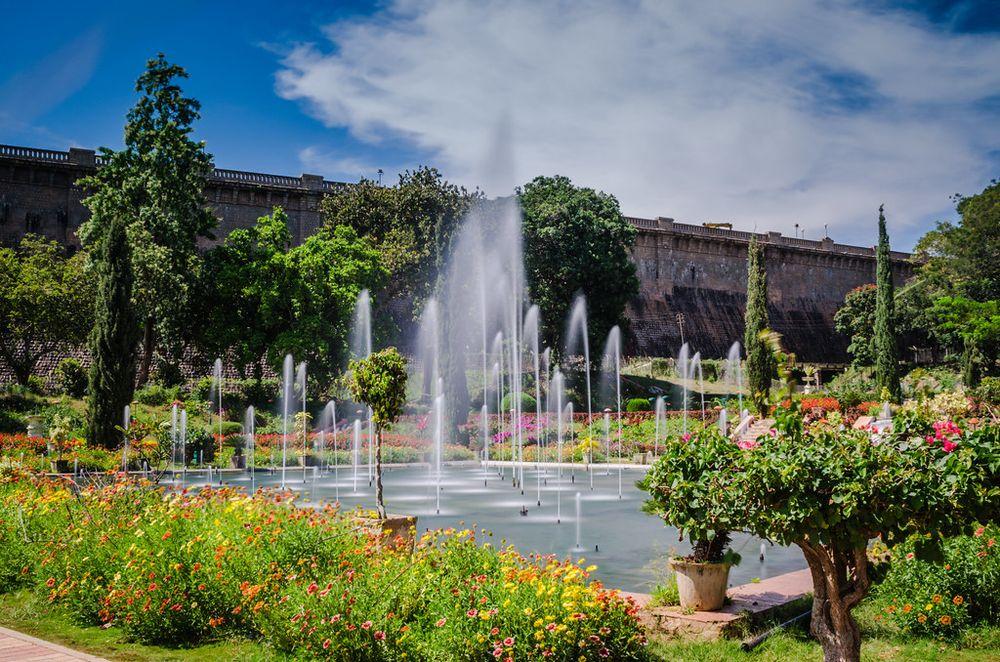
Spread across an area of 60 acres, Brindavan Gardens is adjacent to India's first irrigation dam - the Krishna Raja Sagara Dam, across the river Cauvery.
Modelled on the Shalimar Gardens of Kashmir, the garden entices visitors with its lush green lawns, terraces, parterres, flower beds, topiary and multihued fountains. Today, the Brindavan Gardens is world famous for its ethereal beauty, grandeur and musical fountain.
Melkote
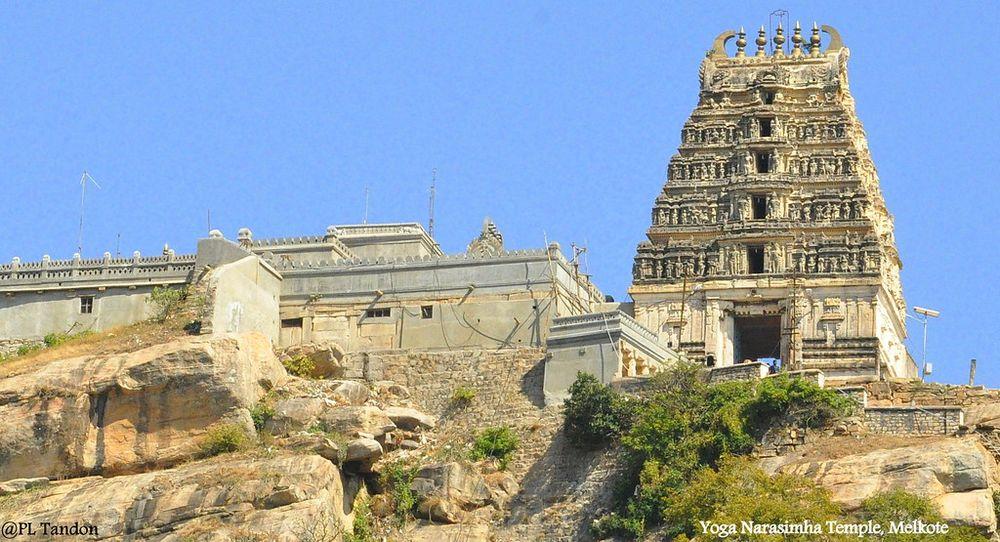
Known for its shrines, monasteries, Iyengar Puliyogare and the Academy of Sanskrit Research, Melkote is a scenic hill town and an important pilgrim centre in Karnataka. Melkote is the location of the Cheluvanarayana Swamy Temple, with a collection of crowns and jewels which are brought to the temple for the annual celebration.
Legend has it that Ramanuja, the Vaishnavite saint, recovered the lost idol of the main deity and installed it here. The main attraction here is the annual Vairamudi festival when the deity is adorned with the magnificent diamond studded crown offered by former Maharajas of Mysuru and taken out in procession.
Shukavana
A rescue centre for injured birds, Shukavana also facilitates visitors to get close with birds and understand them better. Shukavana is located in Dattanagar in Mysuru.
Sanjeevini Park
Often referred to as ‘Happy Man’s Park’, Sanjeevini park near Kamakshi hospital in Kuvempunagar is popular for large statues of laughing Buddha.
Lingambudhi Kere
Lingambudhi Lake in Mysuru was built by Mummadi Krishnaraja Wodiyar in 1828 in memory of Maharani Krishna Vilasa Lingajammanni.
Art & Festivals
Dasara
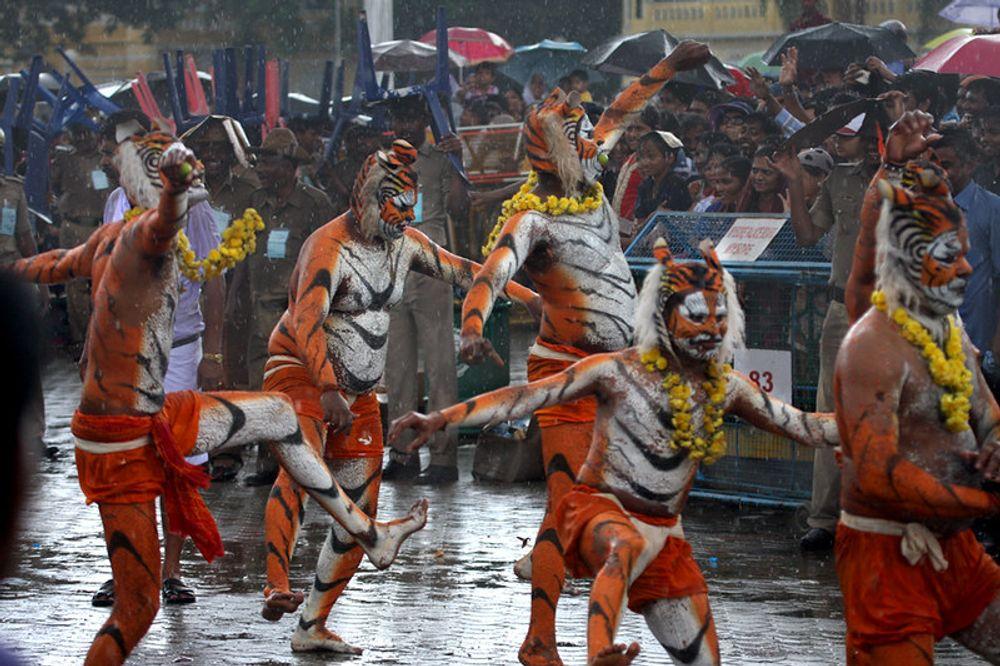
The ten-day festival of Dasara has become synonymous with Mysuru, thanks to the grand celebrations held at the Mysuru Palace. Celebrated with aplomb and joy, Mysuru Dasara is the “Nadahabba” or the State-Festival of Karnataka.
With fairs, cultural events, dance performances and musical concerts, the ten-day festival is celebrated with pomp and pageantry. The tenth day, Vijayadashami, brings a spectacular procession led by the image of the deity.
Bedecked elephants, cavalry, foot soldiers, folk dancers, musicians and tableaux wend their way through the city. The extravagant celebrations come to an end with a torchlight parade as fireworks light up the night sky.
Adventure and Activities
Kabini Backwaters Forest Safari
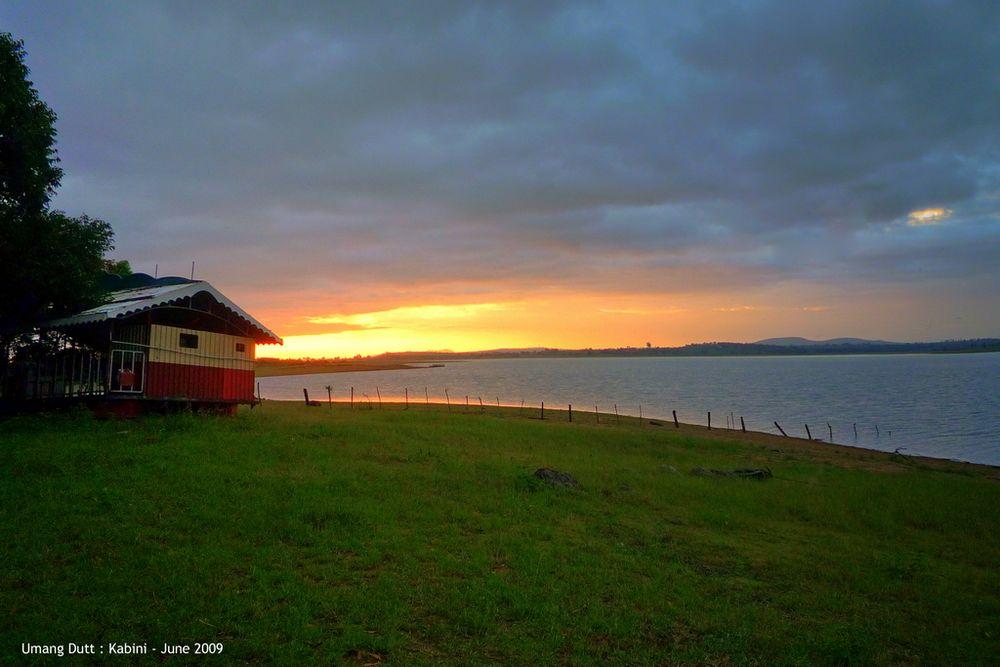
Kabini Backwaters Forest Safari is a popular experience at Kabini. All forest safaris start from Gol Ghar. There are two types of safaris in Kabini- one is the jeep safari and the other is boat safari in Kabini River.
The boat safari lasts for close to 90 minutes and guests may see elephants mud bathing on the shores, several birds such as cormorants, cranes, darters along the river banks, crocodiles as well as snakes. Ensure you are at the location 30 minutes prior
GRS Fantasy Park
GRS Fantasy Park is a popular amusement park in Mysuru city, offering a wide range of thrill seeking rides, family rides, games and entertainment options. Aqua racer, Aqua tornado, Pendulum Slide, Crazy Cruise, Amazonia, Colombia, Music Bob and Dragon’s Den are the intense, adrenaline pumping thrill rides at GRS Fantasy Park.
Mysuru Dasara Kite Flying Competition
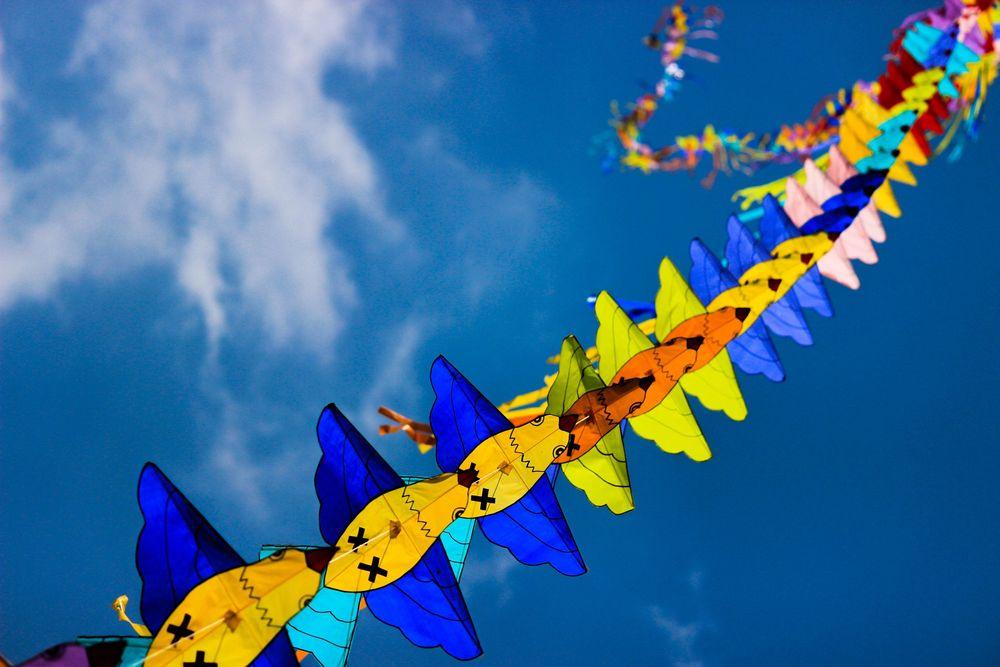
Kite flying competition is usually organized as part of Dasara celebrations, where both professional and amateur kite flyers can participate.
Walking tours
Private operators and volunteers organize short walking tours of Mysuru, based on different themes such as Palace, Food, Best of Mysuru, Mysuru on cycle and so on. Website
Watersports at Varuna Lake
JetSki Rides, Kayaking, boat rides and other watersports are available in Varuna lake, 13 kms from Mysuru city. Varuna is also known for Mahalingeshwara temple showcasing fine Ganga era sculptures.
Skydiving in Mysuru
Skydiving at Mysuru airport is organized subject to operator discretion and necessary approvals. Skydiving is the ultimate of adventures where one can experience free fall for several seconds (30-40 seconds in a tandem fall from 10000 ft).
Museum & Art
Mysuru Rail Museum
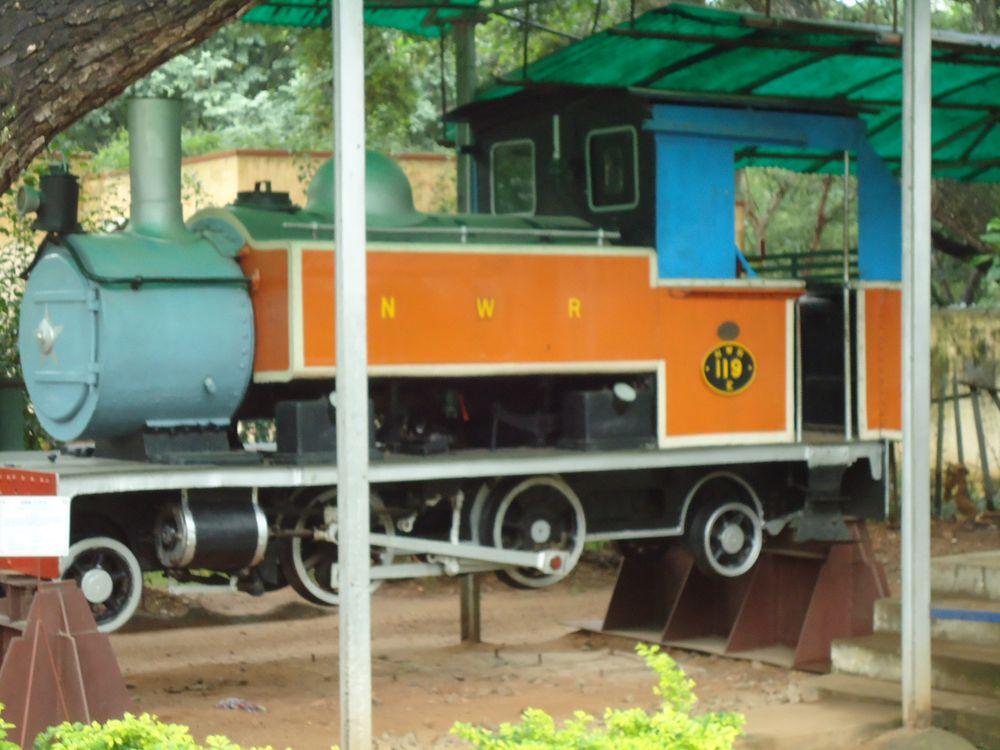
The Rail Museum was setup in 1979 and provides a fascinating insight into the history and growth of the railways in India.
It contains a number of interesting exhibits, including the impressive Sri Ranga Pavilion, with its royal coaches belonging to the Maharaja of Mysuru, the vintage Maharani's Saloon built in the UK in 1899, and a kitchen dining car built in Mysuru in 1914.
A stone's throw away from Mysuru Railway Station, the museum also showcases a battery operated mini-train that takes visitors on a ride around the grounds of the museum.
Jayalakshmi Vilas Mansion , Manasagangotri
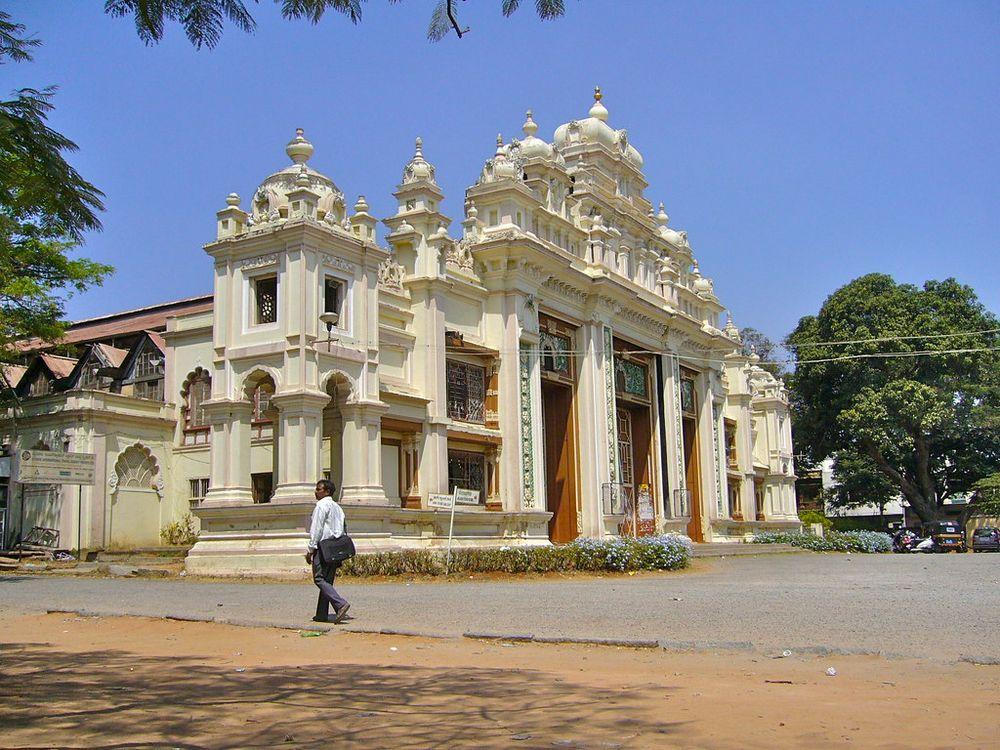
A former royal mansion now converted into a museum. Artifacts pertaining to local folk performing arts, tools and ancient objects of various artisans and other archaeological findings are exhibited here.
Jayachamarajendra Art Gallery
Known for its architectural brilliance, the magnificent Jaganmohan Palace now houses the Jayachamarajendra Art Gallery which boasts a stunning collection of clocks, traditional Mysuru gold leaf paintings, ivory and sandalwood figurines, musical instruments, and antique furniture.
Providing a glimpse into the lives of royalty, it displays old photographs of royal occasions and paintings by renowned artists such as Raja Ravi Varma and Roerich.
Folklore Museum
The Folklore Museum is a brilliant repository of folk culture, housed in the Jayalakshmi Vilas Mansion of the University of Mysuru. The museum features a mind-blowing collection of 6,500 indigenously-made artifacts from all over Karnataka, including wooden figurines, rural costumes, utensils, tools and decorative masks.
Melody World Wax Museum
Located on the way to Chamundi Hills, this unique museum is first of its kind in India. An excellent example of creative brilliance, sand sculpture museum offers a creative setting with artistic works.
Intricate carvings on the sand and their unique themes make it a place worth visiting. A 15-feet-high sand statue of Lord Ganesh welcomes visitors to this open air space. It displays around 150 sculptures of sand in 16 different themes, which have been placed over an area of 13500 sq. feet.
These sand sculptures have been created using more than 115 truckloads of sand. Various interesting themes have been used at the museum ranging from mysore heritage, wildlife, culture, instances from different religious epics and fairy tales and stories.
Sand Sculpture Museum
Located on the way to Chamundi Hills, this unique museum is first of its kind in India. An excellent example of creative brilliance, sand sculpture museum offers a creative setting with artistic works.
Intricate carvings on the sand and their unique themes make it a place worth visiting. A 15-feet-high sand statue of Lord Ganesh welcomes visitors to this open air space. It displays around 150 sculptures of sand in 16 different themes, which have been placed over an area of 13500 sq. feet.
These sand sculptures have been created using more than 115 truckloads of sand. Various interesting themes have been used at the museum ranging from mysore heritage, wildlife, culture, instances from different religious epics and fairy tales and stories.
Regional Museum of Natural History
The historical city of Mysuru added another landmark with the opening of the Regional Museum of Natural History (RMNH) on 20th May 1995. It provides a unique opportunity to explore the natural world with exhibits on plants, animals and geology of the southern region of India.
The 'Discovery Centre' is the main focus here, where visitors can learn about the exhibits. The museum is located on the banks of the Karanji Lake, with the Chamundi Hills visible in the background.
Rangayana
Rangayana is a theatre institute and an autonomous cultural organization which operates from Mysuru. The organization consists of a professional repertory company and a theatre-training institute called Bharatiya Ranga Shikshana Kendra.
It also comprises a documentation and research centre called Sriranga Ranga Mahiti and Samshodana Kendra. It has an eminent faculty of trainers, designers and technicians and operates from its own campus. Rangayana organizes theme based national festivals that attracts from all over the country.
What is the best time to visit Mysore?
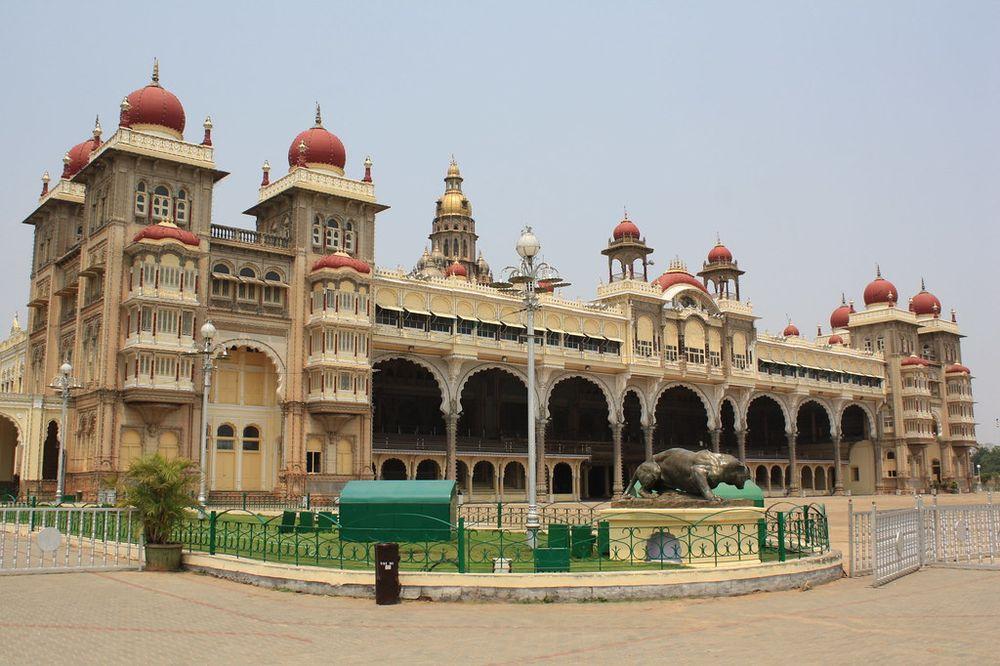
Mysore has a tropical climate, but the best time to visit Mysore is from the Monsoons and Winter months from July to February. The months have pleasant weather as a respite from the intense heat of summer. With these months captivating the city's beauty; summers are less ideal for travelling and sightseeing.

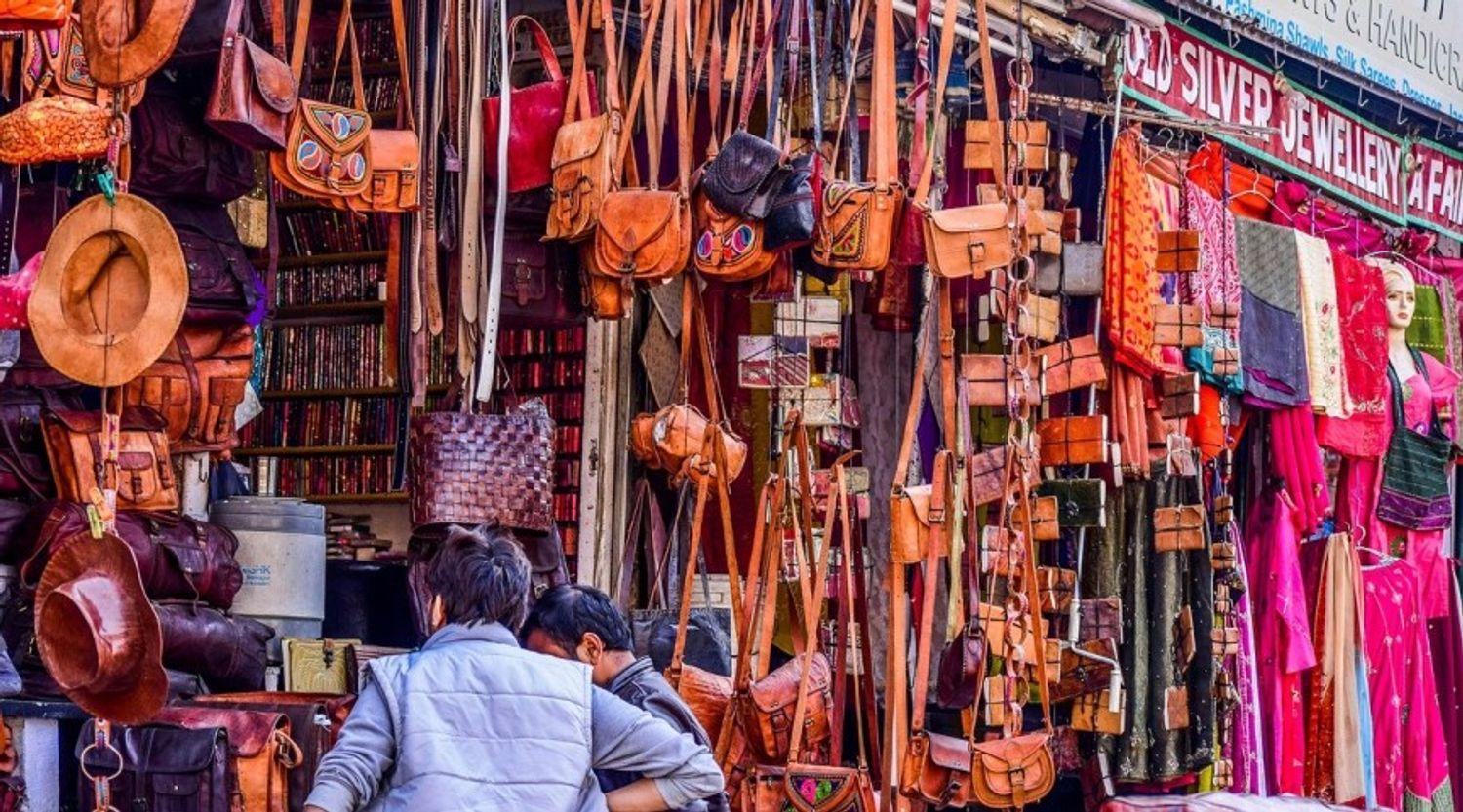
.jpg&w=1920&q=75)
